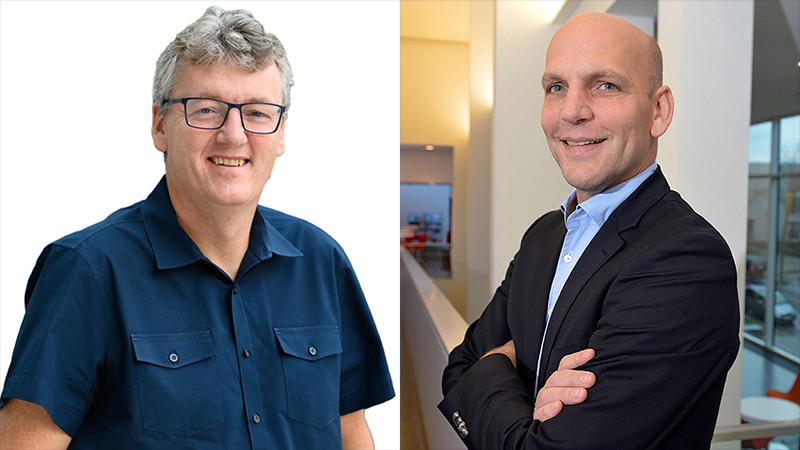Two researchers who developed techniques to speed up and control chemical reactions have won the 2021 Nobel Prize in Chemistry.
Benjamin List and David MacMillan separately developed a new type of catalysis in the 1990s. The technique — called asymmetric organocatalysis — is widely used today for the production of drugs and other chemicals. Crucially, the catalysts that the pair developed can distinguish left from right, synthesizing molecules that are different from their mirror image.
The pair developed “a truly elegant tool for making molecules — simpler than one could ever imagine”, said chemistry Nobel committee member Pernilla Wittung-Stafshede at the prize announcement. “Until the year 2000, we only knew about two forms of catalysts. But then everything changed. Benjamin List and David MacMillan independently reported that you can use small organic molecules to do the same job as big enzymes and metal catalysts in reactions that are precise, cheap, fast and environmentally friendly.”
“I absolutely didn’t expect this huge surprise — you really made my day today,” List told reporters at a press conference after the announcement. “When I [first] did this experiment, I didn’t know what would happen and I thought maybe it’s a stupid idea, or somebody has tried it already. When I saw it worked, I did feel that this could be something big.”
Alternative catalysts
Catalysts, substances that accelerate reactions without being used up, are fundamental tools for chemists. List, who is based at the Max Planck Institute for Coal Research in Mülheim an der Ruhr, Germany, and MacMillan, at Princeton University in New Jersey, developed catalysts that can drive asymmetric catalysis, in which a reaction produces more of the left-handed version of a molecule than the right-handed one, or vice versa.
In 2000, List showed that the amino acid proline could act as a catalyst in an aldol reaction, in which carbon atoms from two different molecules are bonded together, and that it could drive asymmetric catalysis1. Around the same time, MacMillan designed small organic molecules that can provide or accept electrons and therefore efficiently catalyse reactions2.
Until their breakthroughs, the common wisdom among chemists was that a catalyst that synthesizes chiral molecules (those of a particular handedness) had to either be an enzyme or contain a transition metal such as iron. “It was a conceptual shift,” says chemist Cathleen Crudden at Queen’s University in Kingston, Canada. “For a long time, people thought that metals and enzymes were the only ones.”
The ‘organocatalysts’ developed by List, MacMillan and their collaborators had no metals. And unlike enzymes — typically large complexes made of proteins — they were small, organic molecules, “which, I think, is super exciting”, says chemist Claudia Felser at the Max Planck Institute for the Chemical Physics of Solids in Dresden, Germany. Organocatalysts are cheaper to produce, and more sustainable, than those containing metals, and interest in the field has exploded since their discovery.
Gift from nature
In a range of phenomena and at vastly different scales, nature often seems to prefer one handedness over another, Felser adds. This is reflected in the fact that matter predominates over antimatter in the Universe, and that life uses left-handed amino acids and right-handed sugars.
“Why in the world is biology single-handed? Why do we have this preference in nature? We don’t know,” List said. “This handedness is transferred in the catalytic reaction onto the substrates so that you get more of these handed molecules. It’s a great gift, I would say, that nature provides these molecules for us.”
“Chirality, for me, is the most interesting question in physics and chemistry and maybe even in biology,” Felser says, adding that today’s announcement could be “inspiring for the younger generations to look more for symmetry violations in nature”.
“In my opinion, the real revolution of what we have — of our discoveries — is only sort of surfacing now,” said List. He added that receiving the Nobel prize would allow him even greater freedom to pursue new ideas in his research. “I hope I live up to this recognition and continue discovering amazing things.”
"right" - Google News
October 06, 2021 at 06:58PM
https://ift.tt/3mtPGk3
'Elegant' catalysts that tell left from right scoop chemistry Nobel - Nature.com
"right" - Google News
https://ift.tt/32Okh02
Bagikan Berita Ini















0 Response to "'Elegant' catalysts that tell left from right scoop chemistry Nobel - Nature.com"
Post a Comment